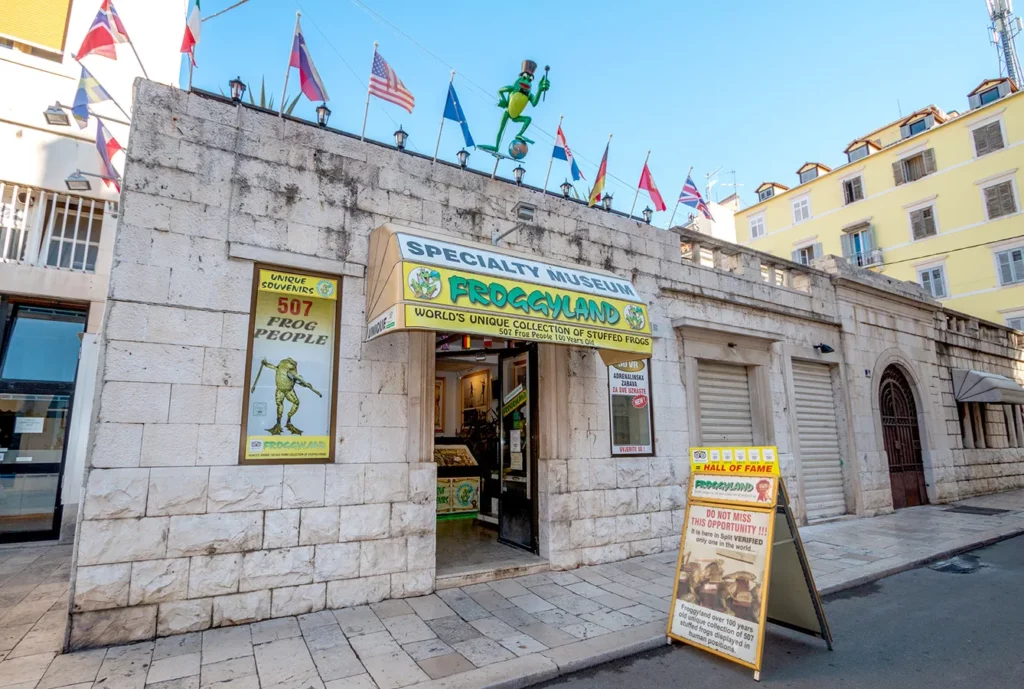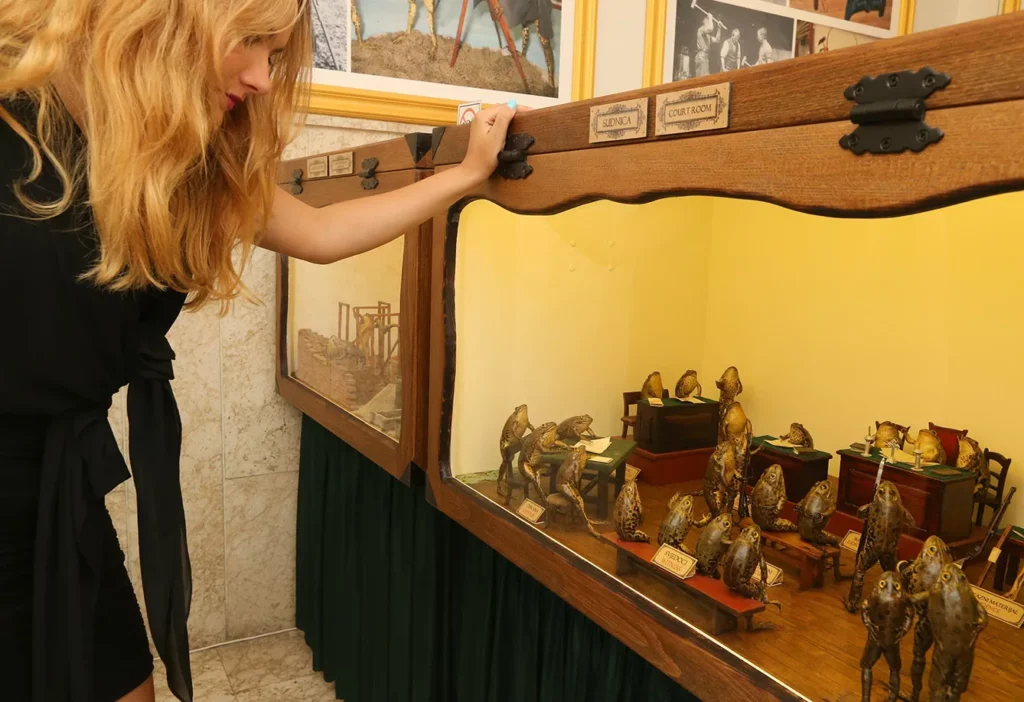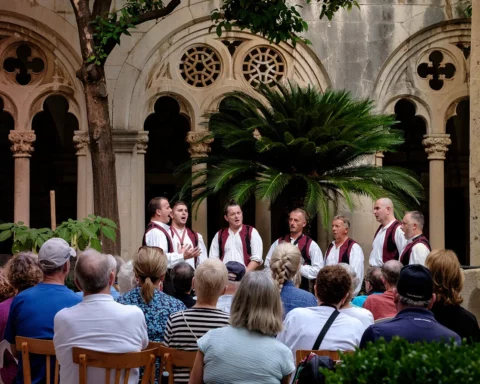You’ve probably seen a stuffed animal in a biology class at school and may have wondered how it was so perfectly preserved. Taxidermy is the art of preserving animals, and the taxidermy of amphibians and fish is particularly challenging, thanks to their fragile skin.
Hungarian Ferenc Mere was a top taxidermist at the beginning of the 20th century and created a collection of over 1000 stuffed frogs. He lived in the area of Vojvodina, a former part of the Kingdom of Hungary and today a province in Serbia. The legend goes that as a child, he lived by a pond, and every day, he would search for frogs and admire them. Then at night, he would fall asleep to the sound of frogs croaking.



After Ferenc died, his collection of stuffed frogs ended up in a basement. Luckily, thanks to his superior taxidermy skills, the collection remained unscathed and was untouched until 1964, when Croat Marija Medvešek happened upon the collection. She realized what a gem she had just found and promptly paid what would roughly amount to the price of a good car. At the time, the Medvešek family owned a traveling fair, and the collection of frogs became a hit in every city they set up in. Eventually, the fair became unsustainable and shut down, and the frogs once again landed in a basement.
In the 1990s, Ivan Medvešak bought the rights to the collection from his brothers and painstakingly restored it. He set it up in a large trailer and set off on a tour of Croatian cities with an exhibition called the “Kre-are show.” After a few years, he decided it would be good to have a permanent location for the frog exhibition and thus founded the “Froggyland” Museum in Split. Since 2015, “Froggyland” has been part of the Tripadvisor “Hall of Fame” with a Certificate of Excellence thanks to visitors’ votes.
You may be wondering what exactly you might find in a museum called “Froggyland.” Well, of the more than 1000 original frogs, 507 remain to this day. Due to the excellent taxidermy work, which involved the preparation of the amphibians through their mouth so as not to leave any external incisions, the frogs are easily positioned and adapted to various human activities. The museum features a total of 21 scenes where Mere’s frogs take the spotlight, including a school class where the frogs are students, a carpentry workshop where frogs make furniture, and a rowdy froggy tennis match. The scene with frogs in the circus is especially attractive to foreigners.
Numerous world media, from the Guardian to NPR, have written about this unique attraction. However, while foreigners are delighted with the Museum of Frogs, the local population is not so impressed. The owner fell into financial problems during the pandemic, and now there is a possibility that the collection might have to be sold.
Several outlets have classified the Frog Museum as one of the most unusual and unique museums in Europe and the world with its century-old collection of frogs. The undoubted tourist attraction in Split is a testament to the fame of the taxidermist Ferenc Mare and the effort and commitment to the preservation of the collection by the Medvešak family.







